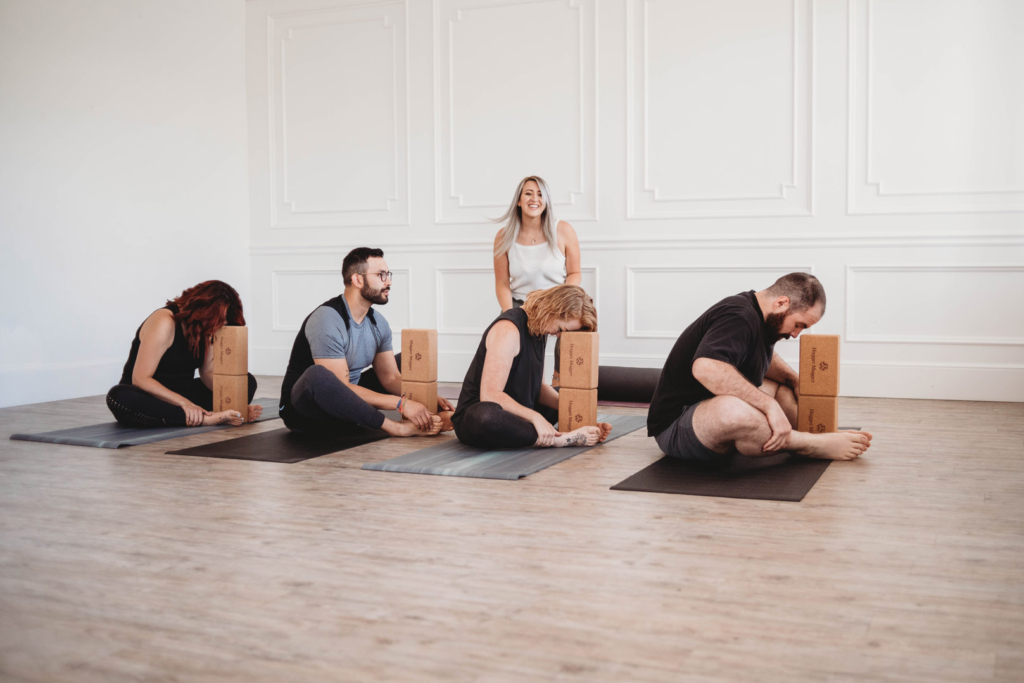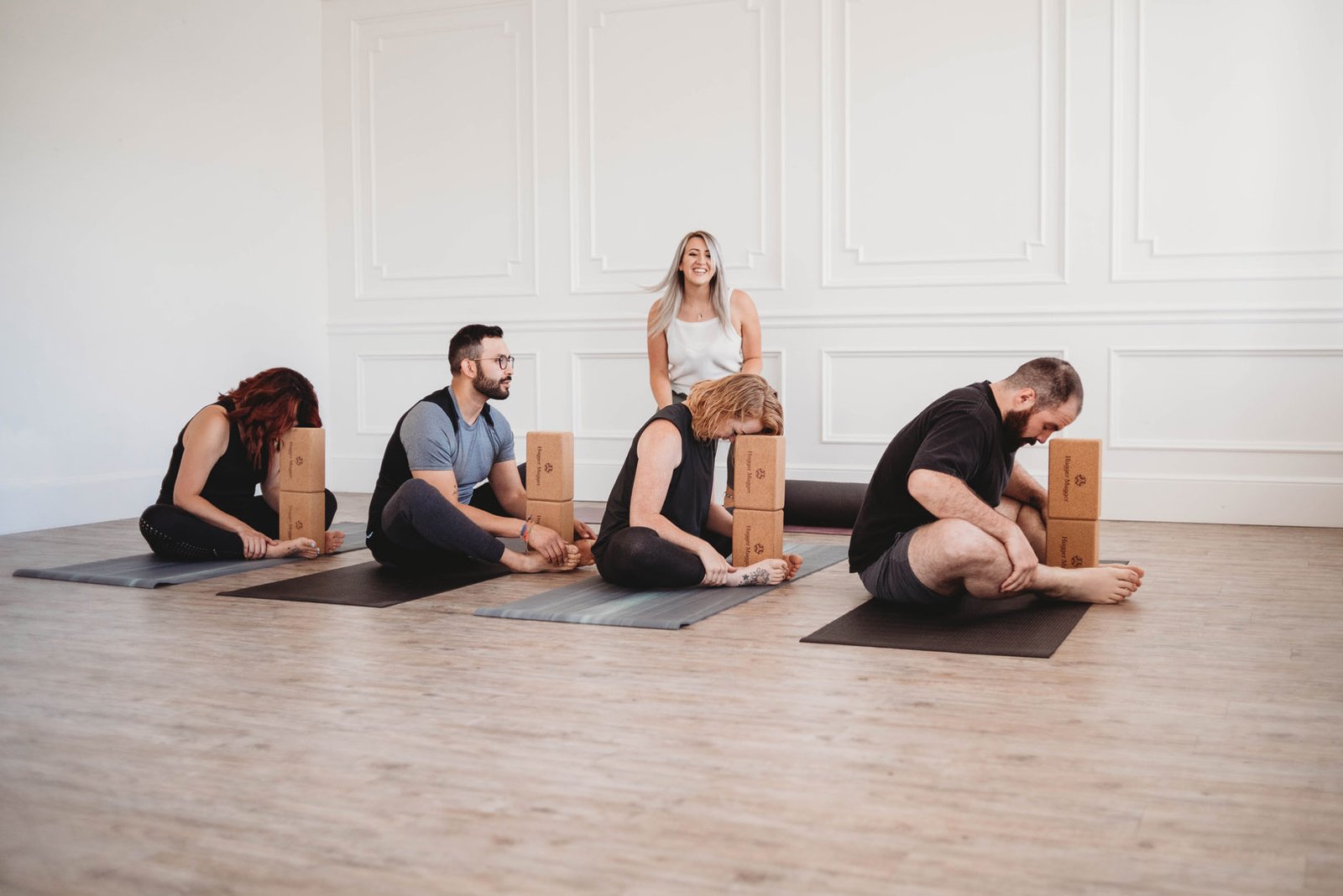This entry was posted on October 20, 2025 by Charlotte Bell.

Sometimes when I think back to my first yoga teachings, I have to cringe a little (or sometimes a lot!). Like most yoga teachers, I’ve never taught a class full of cookie-cutter practitioners. This should have been an indicator from the start. But like many yoga teachers, I assumed that students whose forward and back bends weren’t “perfect” or whose knees were in the air in Baddhakonasana (Bound Angle Pose) just needed to develop more soft tissue flexibility. I have often stated that if these students practice long enough, they will eventually be able to perform Instagram-worthy hip opening poses.
Enter Anatomy for Yoga by Paul Grilley. While representing Hugger Mugger Yoga Products at a yoga conference in the early 2000s, I took a break from the booth to take a class with Paul Grilley. I had never heard of him and knew nothing of his work, but Anatomy for Yoga seemed interesting to me.
Baddhakonasana – as well as most other yoga poses – is in the bones
Grilley’s 90-minute presentation changed the way I viewed yoga practice. Armed with an assortment of human bones, he showed how the way our joints are shaped and assembled is just as unique as our facial features, hair color and predilections.
Let’s explore the hip joints as an example. The degree of mobility of the hip joint in any individual is determined by the depth, location and orientation of the hip sockets. The shape and angle of the femur bones also influence hip mobility.
People with shallow eye sockets will naturally have more mobility, as well as a greater tendency for cartilage damage, but that’s a topic in itself. Practitioners with more lateral orbits will find it easier to do Baddhakonasana, Sukhasana (easy seated pose) and Upavista Konasana (seated angle pose). In other words, these people’s hips will rotate outward easily.
Other people’s hips tend to turn inward more easily. If your hip sockets are deep and positioned forward on the pelvis, the bones of your femur will contact the outside of your sockets when you practice Baddhakonasana. When bone contacts bone, no amount of flexibility will allow your thigh bones to reach the ground. Our bones truly have the last word.
There are also people whose hip joints rotate in and out easily. The range of mobility possibilities of our yoga students is equal to the number of students in our classes.
Everything is fine
Here’s the good news: It doesn’t matter how far your thigh bones are from the floor in Baddhakonasana. It doesn’t matter if Sukhasana will never be your favorite meditation position. Sukhasana is not the only suitable meditation position. Vajrasana (Lightning Bolt Pose) is ideal for people whose hips rotate inward more easily.
As a teacher, it is important to remember that every student is unique. There are no cookie-cutter yogis. And students whose thighs reach the floor in Baddhakonasana are neither “better” nor “more advanced” than students whose thighs will never reach the floor. The longer we teach, the more we understand that strict rules simply don’t apply to everyone. The ability to meet each student as an individual and learn from their unique qualities is what makes our teaching vital.
About Charlotte Bell
Charlotte Bell discovered yoga in 1982 and began teaching in 1986. Charlotte is the author of Mindful Yoga, Mindful Life: A Guide for Everyday Practice, and Yoga for Meditators, both published by Rodmell Press. Her third book is Hip-Healthy Asana: The Yoga Practitioner’s Guide to Protecting the Hips and Avoiding SI Joint Pain (Shambhala Publications). She writes a monthly column for CATALYST magazine and is the editor-in-chief of Yoga U Online. Charlotte is a founding board member of GreenTREE Yoga, a nonprofit organization that brings yoga to underserved populations. A lifelong musician, Charlotte plays oboe and English horn in the Salt Lake Symphony and the folk sextet Red Rock Rondo, whose DVD won two Emmy Awards.

**breathe**
breathe is a plant-powered tincture crafted to promote lung performance and enhance your breathing quality.
ABCVIP thương hiệu lừa đảo, nạp mà k rút được thì dẹp cho rồi
QQ88 thương hiệu uy tín